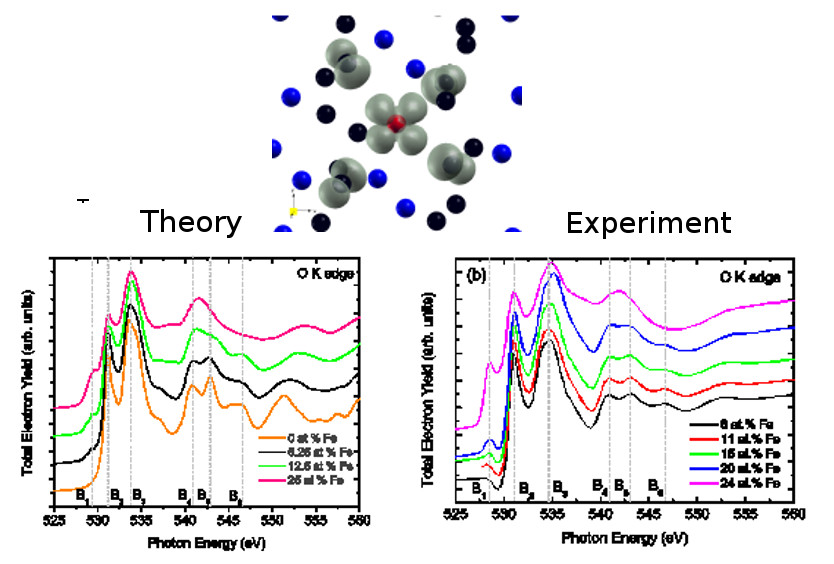
Our final target is to determine what are the more promising materials for future ultra scaled electronic that may be based on quantum system: the realization of quantum memory, quantum computer, quantum sensors will open new perspectives to industrial applications and is of strategic importance to place our industry in a leader position of the incoming quantum electronics.
Spintronics exploits the charge and spin of an electron for carrying and storing information to radically modify the current electronic devices, permitting much faster operations, low-energy consumption, quantum information storage/manipulation, and extreme miniaturization. Recently, diluted magnetic oxides, such as Zirconia and Hafnia doped with transition metal impurity, attracted considerable interest as materials for room temperature spintronic technology. We computed ab initio the phase diagram of these oxides as a function of doping concentrations. We focused on ZrO2 doped with Fe, since, according to our simulations, Fe is predicted to have the largest magnetic moment among the transition metal elements when they are embedded in Zirconia. ZrO2:Fe, with Fe content from diluted regime (about 2%) to high concentration (25%), has been studied in detail by a combined theoretical-experimental approach. Thin films of Fe-stabilized cubic zirconia, with Fe uniformly distributed in the samples, has been grown (for the first time by atomic layer deposition) and the data from spectroscopy experiment compared with their ab initio counterpart. This analysis suggests that the system is an antiferromagnetic semiconductor with magnetic interaction mediated by O atoms trough the super-exchange mechanism. O vacancies, formed as an effect of Fe doping, play a key role to determine the electronic and magnetic property of the system. The validity of our theoretical predictions is strongly supported by XAS (see figure 1) and XMCD spectra otained at synchrotron radiation facilities.

In the top panel is reported the computational structure.
We recently developed a method to compute magneto-optical properties by an ab initio approach that includes the spin–orbit interaction in a fully relativistic pseudopotential scheme. Our results for test systems of MOKE in bulk Fe, Co, and Ni are in good agreement with experimetal data and very good agreement with results of all electron calculations taken from literature. We applied it to compute Kerr and other magneto-optical effects in low dimensional structures like the half-metal Mn delta-doped GaAs and silicene nanoribbons. Further, we computed the structural and magneto-optical properties of silicone nanoribbons. The minimal width for structurally stable planar structure having zig-zag edges corresponds to a 4-chain ribbon, shown in the heater Figure, whose ground state presents spin polarized edges antiferromagnetically coupled, and a lattice parameter along the nanoribbon axis contracted (∼ 5%) with respect to the bulk value. After having determined the dependence of structural and electronic properties as a function of ribbon widths, we computed optical spectra for nanoribbons with shorter width, in which excitonic effects are relevant due to the confinement in a quasi-1D structure. For light polarized parallel to the ribbon axis, we calculated significant difference in optical absorption spectrum and peak position, which constitute the fingerprint of ferro- or antiferro-magnetic coupling of the electronic state at the ribbon edge.


